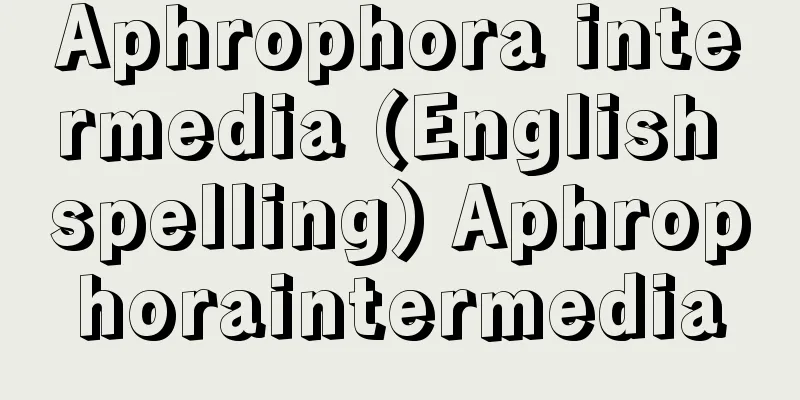Egg - Ran

|
Also called ovum or egg cell. The female gamete of organisms that reproduce sexually. It is larger than the male gamete, has no motility, and contains a large amount of nutrients in the cytoplasm. In animals, it is generally not as morphologically specialized as sperm, and is usually spherical or elliptical. It is larger than somatic cells (especially birds). It contains yolk as a nutrient, and based on the amount and distribution, it is classified into isoyolk eggs (echinoderms, mammals), in which the amount of yolk is relatively small and evenly distributed within the egg, terminal yolk eggs (molluscs, fish, amphibians, reptiles), in which the amount of yolk is relatively large and localized on one side of the egg, and cardiac yolk eggs (also called mesoyolk eggs; insects), in which the yolk is concentrated in the center of the egg. Eggs generally show polarity, with an animal pole (the part where the polar body emerges during egg formation; terminal yolk eggs have less yolk and more protoplasm) and a vegetal pole. Oogenesis takes place in the ovary. First, oogonia divide repeatedly to multiply. This then accumulates yolk and grows to become an oocyte, which then undergoes two further divisions, including meiosis, reducing the number of chromosomes by half to become an egg. In a broader sense, the term refers to the egg and its egg membrane, and can also refer to the embryo just before hatching from an unfertilized egg. In plants, it is formed inside the female gametangium. In angiosperms, the largest of the eight cells that make up the embryo sac is called an egg cell; in gymnosperms, the large cell in the archegonia is called an egg cell; and in ferns and mosses, the lower of the two cells in the archegonia is called an egg cell. In algae and fungi, it is formed inside the oophorum. →Related items In vitro fertilization | Eggs | Cleavage | Ovipary Egg [tamago]→ Related topics (biology) Egg [tamago]Source : Heibonsha Encyclopedia About MyPedia Information |
|
卵子,卵細胞とも。有性生殖をする生物の雌性配偶子。雄性配偶子に比べて大きく,運動性をもたず,細胞質内に大量の栄養を含む。動物では一般に精子ほど形態的に特殊化せず,普通,球形か楕円形。体細胞に比べて大型(特に鳥類)。栄養分として卵黄を含み,その量や分布状態から,卵黄量が比較的少なく,卵内に均等に分布している等黄卵(棘皮(きょくひ)動物,哺乳(ほにゅう)類),卵黄量が比較的多く,卵の一方に局在する端黄卵(軟体動物,魚類,両生類,爬虫(はちゅう)類),卵黄が卵の中心部に集中する心黄卵(中黄卵とも。昆虫)などに区別される。また卵は一般に極性を示し,動物極(卵形成の際,極体が出た部位,端黄卵では卵黄が少なく,原形質の多いほう)と植物極とがある。卵形成は卵巣中で行われる。まず卵原細胞が分裂を繰り返して増殖。次いでこれが卵黄を蓄積して成長し卵母細胞になり,さらに減数分裂を含む2度の分裂を経て染色体数を半減し卵となる。なお広義には卵とその卵膜をあわせたものをさし,また未受精卵から孵化(ふか)直前の胚をさすこともある。植物の場合,雌性配偶子嚢内で作られる。被子植物では胚嚢(はいのう)を作る8細胞のうち,最大の細胞を,裸子植物では造卵器中の大きな1細胞,シダ,コケ類では造卵器内の2細胞のうち下方にあるものを,それぞれ卵細胞という。また,藻類や菌類では,生卵器の中に作られる。 →関連項目体外受精|卵|卵割|卵生 卵【たまご】→関連項目性(生物) 卵【たまご】出典 株式会社平凡社百科事典マイペディアについて 情報 |
Recommend
Functionalist Sociology
...the four sociologies they classified are as fo...
Eddie, MB - Eddie
…meaning “Christian Science.” A branch of Christi...
Seyfert galaxy
A galaxy outside the Milky Way that has an active...
Gushikawa [city] - Gushikawa
An old city on the central east coast of Okinawa I...
Prince Sanehito
Year of death: July 24, 1586 (September 7, 1586) Y...
Tory Party
A British political party. The predecessor of the...
Yoshinobu Onakatomi
A court poet in the mid-Heian period. One of the ...
Rakanji Temple
A Soto sect temple in Atoda, Hon'yabakeimachi...
Ascaphidae
…They are divided into two groups: the relatively...
śakāra (English spelling) sakara
…The clown (vidū‐śaka) was a Brahmin of descent, ...
Wartburgfest
...Since 1714, in the territory of Saxony-Weimar....
Beach rock
A rock formed by the intertidal sand and gravel de...
Oksusu [river] - Okususu
…The total length is 2,620 km, and the drainage a...
Frozen tofu - Kori tofu
Also called Shimi tofu. It is also called Koya tof...
Cotyledon
…The subfamily Cotyledoninae is found mainly in s...









